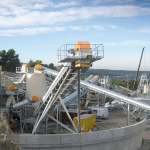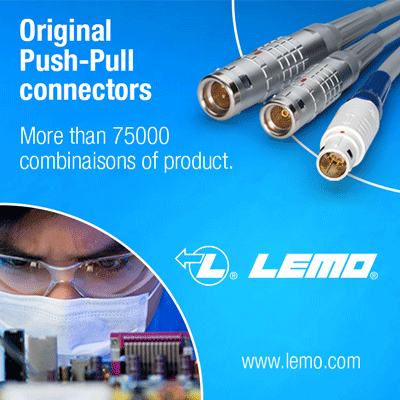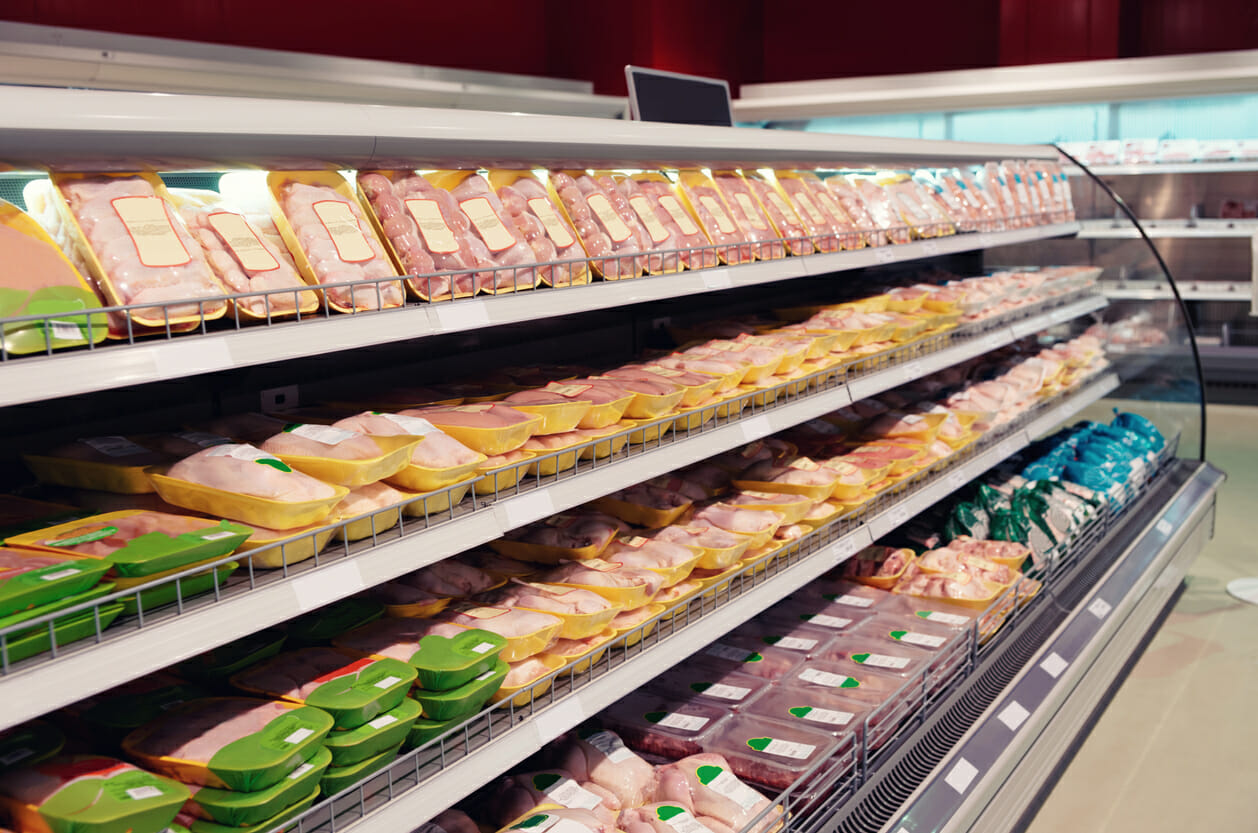With aquaculture production sites widely dispersed throughout remote parts of Scotland’s Highlands and Islands, the logistics of fish waste collection and treatment is always going to be difficult…. or is it?
Not content with being at the thin end of the wedge, the Isle of Lewis is leading by example with its Creed Integrated Waste Management Facility (IWMF), located just outside Stornoway. Owned and operated by Comhairle nan Eilean Siar (CnES), the Local Authority for the Western Isles, the manager and his team at this progressive plant believe firmly in continuous improvement, minimising, maximising and optimising the methods of managing waste from the island’s population of approximately 22,000.
Undeterred by the challenges of a limited electrical grid and logistical costs typically associated with island life, the Creed IWMF has grown steadily to include a combined heat and power plant (CHP), electric boiler and thermal store, a wind turbine and a hydrogen system comprising electrolyser, storage and refuelling station, and a 960m3 anaerobic digester (AD) plant.
Most recently, through careful planning and it has be said, no shortage of patience, Creed also now features the equipment required to take in and process seven tonnes per shift of salmon waste, as David Macleod, Head of Municipal Services at Comhairle nan Eilean Siar explains:
‘what we wanted to invest in – a pasteuriser’
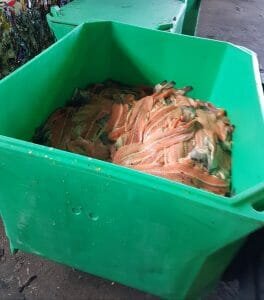 “We always had an eye on how we could use fish waste but before we could invest in equipment, we needed commitment and guarantees from the fish companies about continuity of supply. We did our homework and our Plant Manager Donnie MacMillan visited installations in Scotland to find out about their experiences. But we were still very much in a chicken and egg situation.
“We always had an eye on how we could use fish waste but before we could invest in equipment, we needed commitment and guarantees from the fish companies about continuity of supply. We did our homework and our Plant Manager Donnie MacMillan visited installations in Scotland to find out about their experiences. But we were still very much in a chicken and egg situation.
We had the digester – producing biogas, but we knew we wouldn’t have enough heat to warm up what we wanted to invest in – a pasteuriser. Buying a good quality pasteuriser – not too big or not too small – would enable us to meet ABP (Animal By-Product) regulations, which require the waste to be treated for one hour at 70 degrees C.
Thankfully, when we were able to bring in our new thermal store, together with getting the guarantee from the fish industry, we were able to go ahead. We are a local authority of course – not at a commercial enterprise, so we can’t go ahead with quick purchases. We have to continuously adapt”.
A salmon processing facility on the Island of Lewis was identified as the main source of supply for salmon waste, although deposits from other marine fish farms would also head to Creed IWMF from time to time.
Plant Manager Donnie MacMillan added: “We spent a long time looking at different pasteurisers and had the benefit of seeing working sites where we were given warts and all about equipment performance, reliability of suppliers, back-up and importantly, lessons learned from mistakes made. Eventually we went for Landia, who we never heard anything bad about – and who were keen from day-one to help us achieve our goals and tailor the unit to meet our needs”.
‘determined to make it work’
He continued: “We were restricted into a very tight space by regulations that demand separation of what can be housed in so-called clean and dirty areas, which is rather ironic at a waste management facility – but we had no choice. The late Hugh Vaughan (from Landia) had no hesitation in coming up here to measure everything out. He was determined to make it work. We needed an ensiling tank, which effectively is a buffer/pre-treatment tank.
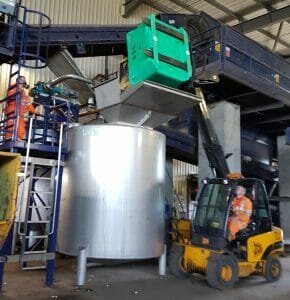 With the space restrictions, Landia were able to provide a 10m3 unit, which sits just in front of the 8m3 pasteuriser. It was a very tight fit, but it worked”.
With the space restrictions, Landia were able to provide a 10m3 unit, which sits just in front of the 8m3 pasteuriser. It was a very tight fit, but it worked”.
The ensiling tank is equipped
with an 18.5kW stainless steel long shaft chopper pump, which recirculates and blends the salmon waste (mainly left-overs from the filleting process) into a smooth purée, before being discharged into the pasteuriser – fitted with Landia’s side-entry propeller mixer and dry-installed chopper pump. The one-hour (minimum) process at 70 degrees C meets ABP (Animal By-Products) regulations, fully approved by vets.
“It had to work” said Donnie MacMillan. “We’d made a commitment to the salmon industry – and unless we could keep our promise, it’d mean a big financial burden. The Landia guys worked flat out from start to finish. There was no wriggle room, but they skidded everything in and nailed it, first time”.
‘positive environmental and economic impact’
Prior to its arrival in Stornoway, Landia had assembled the units, tested every nut and bolt – and ran a trial process with water. The ensiling tank, pasteuriser and Landia personnel then left Shropshire early on a Sunday morning – with installation on the Isle of Lewis commencing 24 hours later.
The pasteurised fish waste – a 7 cubic ton batch per shift – is now integrated with household food waste and garden waste for Creed’s anaerobic digestion process, making a positive environmental and economic impact by not sending it to landfill or having it transported off the island.
Donnie MacMillan added: “The APHA (Animal & Plant Health Agency) take samples every quarter and we collect our own samples every month to make sure we’re free from E. coli, salmonella and pathogens. We run a tight ship. We’ve never failed a sample. I know we’re dealing with salmon waste, but it is a very tactile operation. We keep a very close eye on everything, peering through the hatches, always learning”.
Some of the electricity generated by the CHP is sent to a hydrogen system to produce hydrogen and oxygen. This is captured, compressed and delivered to the salmon hatchery. Oxygenation is essential to aquaculture, and hydrogen is used in a small fuel cell to provide electricity to the remote site, which sometimes suffers from failures of the electrical network. Back-ups have traditionally been in the form of ageing diesel generators, with associated higher CO2 emissions and delivery costs. The hydrogen system at Creed includes a refuelling station, and some of the hydrogen will soon be used to refill a dual-fuel Refuse Collection Vehicle (RCV) operating on hydrogen/diesel.
“We now get additional hours of CHP because of the pasteuriser”, continued Donnie MacMillan, “and I’d say we have a healthy obsession in trying to keep the gas levels from our AD operation as consistent as possible. With the Landia units we can adjust the nozzles at the top and the bottom to eliminate any dead spots – and we have the peace of mind in knowing that somebody from Landia can always speak to us with advice if required. Sometimes we need a steer. We didn’t want to work with a company who would wash their hands of us the second they got their cheque. Landia actually have all the data on their system, so they can check on performance. We received training and have always had very good support and technical back up – and we have the potential to take in more salmon waste in the future”.
Landia 01948 661 200


